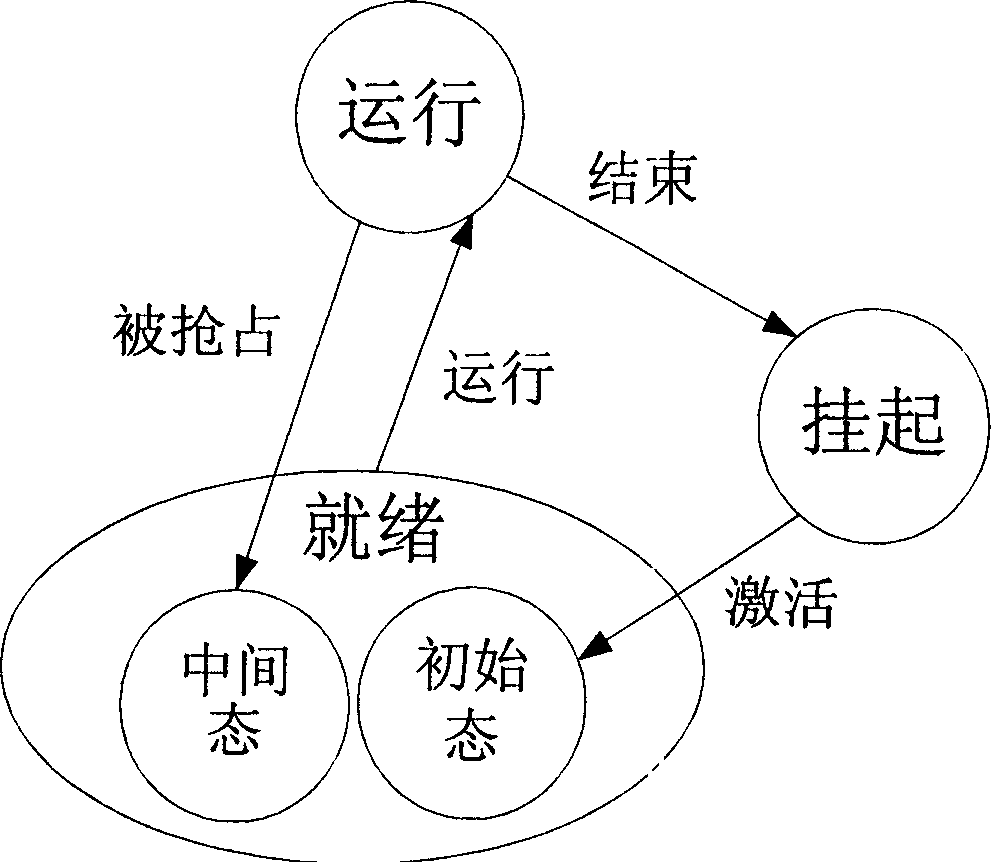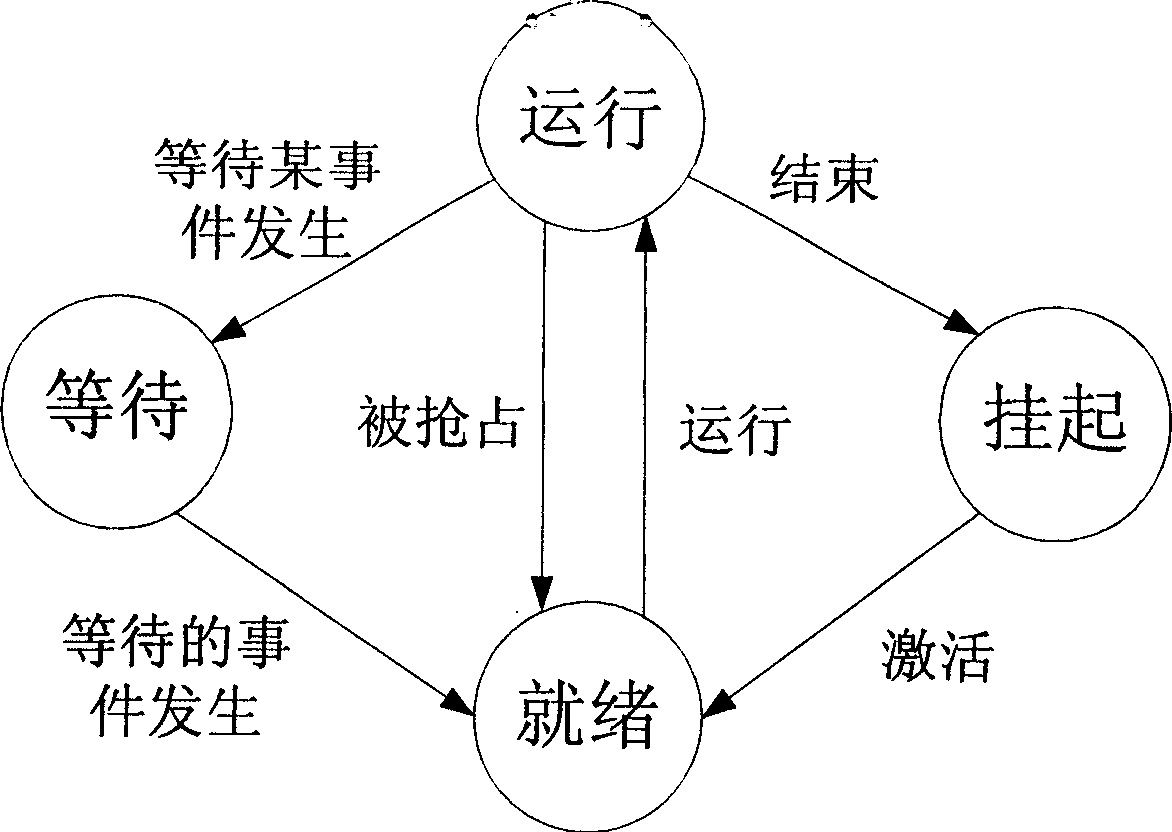Task scheduling method for embedded real-time operation system supporting OSEK standard
An operating system and task scheduling technology, applied in the direction of multi-programming devices, etc., can solve problems affecting the scheduling efficiency of embedded real-time operating systems
- Summary
- Abstract
- Description
- Claims
- Application Information
AI Technical Summary
Problems solved by technology
Method used
Image
Examples
Embodiment 1
[0077] Embodiment 1: as Figure 5 shown. The operating system in the BCC1 state adopts the full preemption method. There are three basic tasks, P1, P2, and P3, and the priorities are arranged from high to low, that is, P1 has the highest priority, P2 takes the second place, and P3 has the lowest priority.
[0078] The system starts at time t0. At this time, task P1 is suspended, P2 and P3 are ready, P2 has a higher priority and runs first, and P3 is in the initial state of the ready state. At time t1, the first scheduling occurs, the current task P2 finishes running, and the initial high-priority task P3 runs. This is the simplest scheduling situation, and the optimized scheduling strategy A is adopted.
[0079] P3 runs until it activates P1. Because the priority of P1 is higher than that of P3, P3 is preempted, the second scheduling occurs at time t2, P3 enters the intermediate state of the ready state, and P1 runs. Because P3 has not finished running, it needs to save it...
Embodiment 2
[0083] Embodiment 2: On the basis of Embodiment 1, look at Embodiment 2 again. Such as Image 6 shown. Embodiment 2 is an operating system in the ECC1 state, which adopts the full preemption mode. There are three basic tasks, P4, P5, and P6, and the priorities are arranged from high to low, that is, P4 has the highest priority, P5 is the second, and P6 has the lowest priority. For simplicity of illustration, Example 2 only highlights the scheduling situation of the "waiting" state.
[0084] The system starts at time t0, task P4 is suspended at this time, P5 and P6 are both ready, P5 has the highest priority and runs first, and at this time P6 is in the initial state of the ready state. At time t1, the operation of P5 ends, the first scheduling occurs, and P6 runs, which is similar to the time t1 of instance 1, and the scheduling strategy A is adopted.
[0085] P6 runs until it activates P4. Because the priority of P4 is higher than that of P6, P6 is preempted, the second ...
PUM
 Login to View More
Login to View More Abstract
Description
Claims
Application Information
 Login to View More
Login to View More - R&D
- Intellectual Property
- Life Sciences
- Materials
- Tech Scout
- Unparalleled Data Quality
- Higher Quality Content
- 60% Fewer Hallucinations
Browse by: Latest US Patents, China's latest patents, Technical Efficacy Thesaurus, Application Domain, Technology Topic, Popular Technical Reports.
© 2025 PatSnap. All rights reserved.Legal|Privacy policy|Modern Slavery Act Transparency Statement|Sitemap|About US| Contact US: help@patsnap.com



